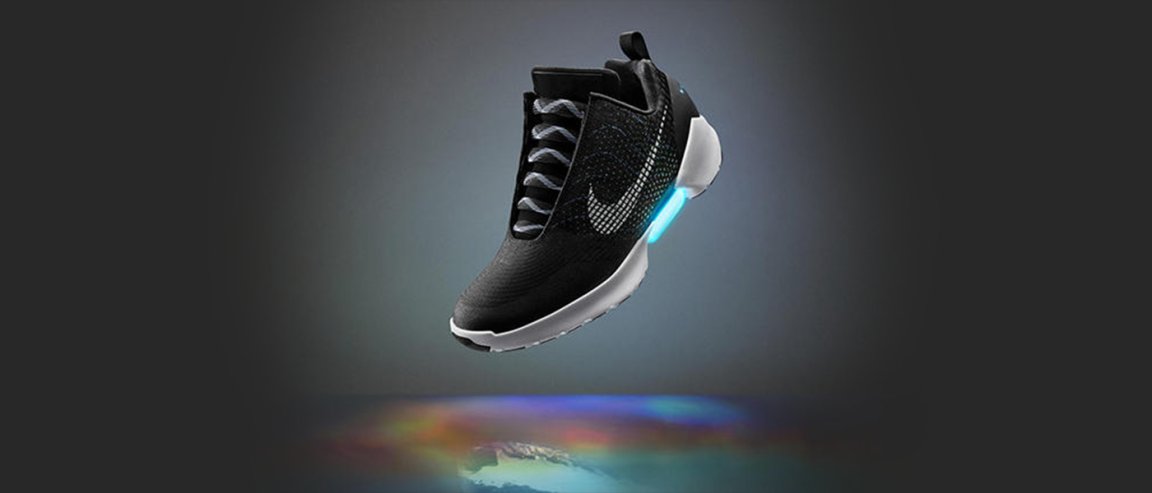
Power Laces
Shoe technology is a little noticed field of development, but it brings in a lot of cash. Just ask Nike or Adidas. Dedicated customers will line up for each new shoe offering, and athletes follow shoe trends on the belief that they can help boost performance.
Nike is just about ready to release the granddaddy of futuristic shoe concepts. Think pretty much Marty McFly’s power-laces from Back to the Future: Part II. The company has just announced that its self-lacing shoes will be available soon.

A tweet from Nike’s Heidi Burgett made the announcement, saying that the HyperAdapt 1.0 will be available for “experience and purchase” by November 28, 2016. These shoes will be available in select US stores only, and are expected to command a hefty price tag.
A Wired feature detailed some of the internal workings of the HyperAdapt 1.0. The laces are made of standard 200-pound-test fishing line, which are connected to a lacing motor that adjust for foot shape. This is what Nike calls its “adaptive lacing” technology.
When you place your foot on the shoe, sensors in the foot automatically adjust laces depending on the specific foot. Two buttons near the tongue of the shoe adjust the tightness of the whole shoe.
Even more, the shoe is not only self-lacing, it can also light up. LED lights up the sides and back of the shoe. They’re not your typical show lights either, the lights actually serve the purpose of helping to indicate when the shoes need to be charged. The shoes’s batteries need three hours of charging and should last up to two weeks.
Target Customers
But aside from the novelty of buying Marty McFly’s shoes, what really is the use of buying shoes that can tie themselves? As it turns out, the applications are many.
The shoes were tailored specifically to meet the needs of athletes. Shoe tightness can be easily controlled via the buttons, so athletes need not torture their feet with tight lacing when they’re just on the bench or shooting free throws.
More importantly, the shoes can be a great asset for those who may have difficulty tying their shoes. That includes people with disabilities and others who may lack fine motor control. While the technology is likely not going to replace velcro, it does give a stylish, high-tech option to replace traditional laces.